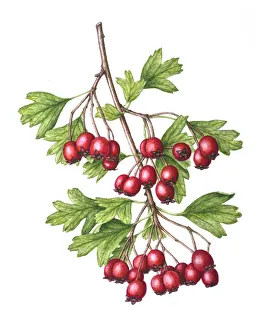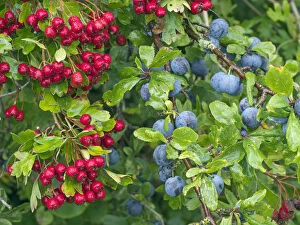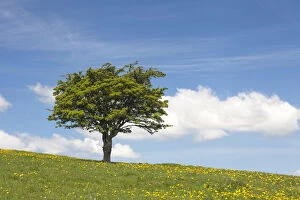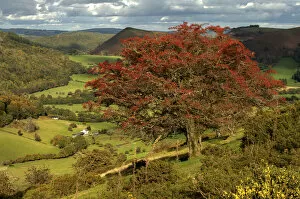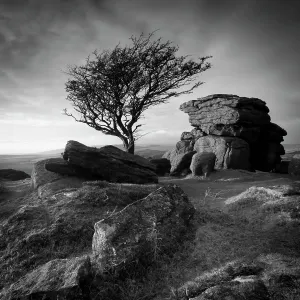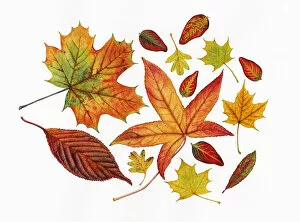Common Hawthorn Tree Collection
The common hawthorn tree, scientifically known as Crataegus monogyna, is a versatile and vital part of the natural world
All Professionally Made to Order for Quick Shipping
The common hawthorn tree, scientifically known as Crataegus monogyna, is a versatile and vital part of the natural world. Its branches provide shelter for various bird species, such as the tree sparrow (Passer montanus), which can be seen feeding its fledglings on the sturdy limbs. In Norfolk, England, this resilient tree stands tall on a hillside in Deep Dale, Derbyshire. The beauty of the common hawthorn extends beyond its structure; it bears fruits that are both visually appealing and beneficial to wildlife. The blackthorn sloes and hawthorn berries found in Sierra de Grazalema Natural Park attract numerous creatures seeking sustenance amidst poplar woodland. Even when stripped of leaves during winter months, ancient hawthorns continue to grace the landscape with their presence. Their gnarled trunks tell tales of resilience and endurance throughout time. Linda Pitkin's watercolour painting beautifully captures the essence of these vibrant red berries against a backdrop of green foliage. It serves as a reminder that nature's artistry can be found even in small details. In Carboniferous limestone regions, common hawthorns find unlikely homes within joints and crevices. Their ability to grow outwards defies expectations and showcases nature's determination to thrive under any circumstances. As autumn arrives, sweet gum leaves intermingle with those of the common hawthorn trees. This colorful display adds warmth to landscapes already adorned with ripening blackthorn sloes and crimson hawthorn berries. Brackagh Moss NNR in Northern Ireland becomes an enchanting sight when covered in clusters of ripe hawthorn berries. These bountiful offerings serve not only as nourishment but also as symbols of abundance within nature's delicate balance. A monochrome image near Saddle Tor reveals the stark contrast between granite outcrops and a solitary Hawthorn tree.


